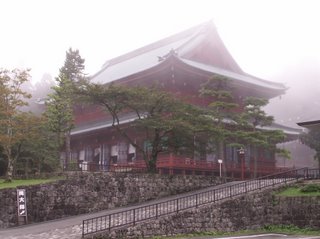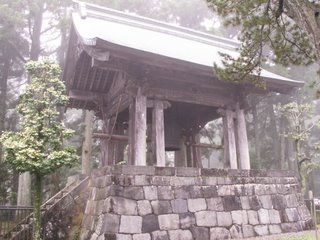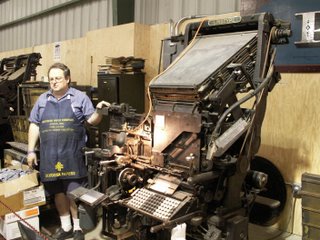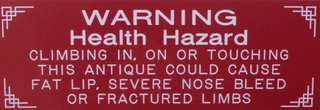
It was a long flight, but I'm finally home. As soon as the jet-lag wears off a bit, I'll post a few more pictures of this last trip.

 Moving on a little further there’s a large bell similar to what is found at many temples. I later noticed that this was one of the least ornamented structures in the area. Yet a close look shows considerable carving work.
Moving on a little further there’s a large bell similar to what is found at many temples. I later noticed that this was one of the least ornamented structures in the area. Yet a close look shows considerable carving work. One of the better known structures here is the 5 story pagoda. It’s not that 5 story pagodas are unheard of in this region of the world. Quite the contrary; it’s the unusual construction style that makes this pagoda interesting.
One of the better known structures here is the 5 story pagoda. It’s not that 5 story pagodas are unheard of in this region of the world. Quite the contrary; it’s the unusual construction style that makes this pagoda interesting.
Rather than build a large lower level and repeatedly reduce the footprint of the floor above, all of the levels are the same size. This keeps snow from building up on all of the lower levels, which is important at this altitude. There’s another unique feature to this too. It has a sort of an earthquake protection feature. A large wooden column was suspended by ropes inside the pagoda; the idea being that in an earthquake, this would help to dampen the swaying of the building. Once again, if it works, it would be important in this location.
The clouds made it impossible to capture the entire thing, but you can see a little from this shot.
Here’s a picture of the sacred stables of the Toshogu shrine. Around the stable you will see multiple panels of carvings. The monkey is thought to be a natural guardian of horses, so it was a natural choice for decorating the building.
Each panel depicts a group of monkeys living a particular style or type of life. The most famous of these carvings panels is the three wise monkeys who see no evil, hear no evil, and speak no evil.
Really, everywhere I went here there were some incredible examples of wood carving and metal working. There was so much that it was rather overwhelming at times. For instance, you could spend several minutes examining the details of a figure like this one
Yet when you zoom out a little you realize that it would take forever to examine everything here.
This is the Yomeimon gate, with over 500 carvings it is one of the most ornate pieces of work in the Toshogu shrine. It is also known, after translation, as the gate where people spend all day looking. I can certainly see why.
This would probably be a photographer’s paradise if it weren’t for two details. First, EVERYONE thinks it’s a photographer’s paradise and so the place is loaded with tourists like me trying to get shots of all the buildings and there’s usually no way to get an unobstructed view of a subject. Second, you’re not allowed to take pictures of many things here. Just in case you forget, there are multiple signs and people reminding you all the time. Of course, even though you can’t take pictures, the local vendors (many of whom are actually set-up inside these beautiful buildings) are more than happy to sell you picture books that show you everything.
I couldn’t do a post on this town without at least one picture of the thing that made it truly famous.
 This is the final resting place of Shogun Ieyasu Tokugawa the great unifier. Were it not for his presence (or rather, the presence of his remains) this great memorial to the strength and wealth of his family would not have been built.
This is the final resting place of Shogun Ieyasu Tokugawa the great unifier. Were it not for his presence (or rather, the presence of his remains) this great memorial to the strength and wealth of his family would not have been built.
This bridge is one of the first things in Nikko that shows any sign of its significance. This sacred bridge, also known as the 'snake bridge' is tied to one of the local legends. As the story goes, Shodo Shonin, the Buddhist priest mentioned above, was unable to cross the river on his mission to climb Mt. Nantai. The god Jinjao appeared and cast down a pair of magic serpents which formed a bridge. I don't know much about magic snakes, but there is definitely a bridge there.
When seen close up, it's apparent that the bridge is in better condition than one might expect for a couple of ancient snakes. There's a very good reason for that, or rather 800,000,000 little reasons. A project costing 800 million yen (~60-70 million US$) and lasting from 1997 to 2005 restored this bridge to it's former glory.
In years gone by, you couldn't walk across this bridge unless you were an emperor. Now, anyone with a few hundred yen can walk across the bridge, or rather the platform about 6" above the bridge. I suppose they don't want anyone scuffing up their multi-million dollar lacquer. finish.
The experience of seeing this bridge was quite fascinating, and a bit eerie. The air was full of dragonflies which seemed to almost perfectly compliment the bridge's colors.
The other thing that really gave it a neat feel was the combination of creeping mist and clear blue water. The pictures cannot do it justice, but this area was blanketed in clouds and the water was clear enough to see down to the bottom of the river. It was really lovely!
More pictures and commentary will follow when I find some extra time.
 Today number 6 has been restored to a condition so pristine that it could be mistaken for a brand new engine.
Today number 6 has been restored to a condition so pristine that it could be mistaken for a brand new engine.
Steam trains aren't the only things on rails here. The Midwest Electric Railway operates a fleet of old trolleys on the south end of the fairgrounds. Their collection contains cars from 3 continents and stretches back to before WW I.
In case the real thing isn't enough there are even models on display. I don't mean little electric trains either, these are scaled down versions of the real thing!
 The models aren't limited to trains either. There are model steam traction engines, stationary steam engines, and gas engines too!
The models aren't limited to trains either. There are model steam traction engines, stationary steam engines, and gas engines too!
For several years now, Old threshers has had it's own print-shop for printing items like fliers and business cards. This year they have expanded it so that they are printing their own newspaper. I expect the print shop will increase it's capabilities even more as it restores several Linotype machines like the one below. Any review of old technology would be incomplete without saying a few words about device that helped the industrial revolution escape from the confines of waterwheels and beasts of burden. The stationary steam engine made it possible to run large amounts of machinery at consistent speeds with relatively little dependence upon human interaction or natural energy sources.
Any review of old technology would be incomplete without saying a few words about device that helped the industrial revolution escape from the confines of waterwheels and beasts of burden. The stationary steam engine made it possible to run large amounts of machinery at consistent speeds with relatively little dependence upon human interaction or natural energy sources.
Strangely enough the boilers and steam pistons that drive these machines are of fairly little consequence on their own. It is only when they are combined with a crankshaft and valve-gear that they become truly useful, because they are then capable of producing constant rotary motion. Add a flywheel to smooth out the flow of power (through the use of momentum) and a governor (to control the speed without constant human supervision) and you have the makings of a great piece of engineering.
And as time marches on, we move from steam to gasoline.
 The gas engines of this type were made in much the same way that their steam driven ancestors were designed. Basically, the energy from the combustion chamber was used to build up energy in a large flywheel. This smoothed out the flow of power, which was necessary because unlike most modern engines they are designed to make multiple rotations without a power stroke. They use a typical 4 cycle design (intake, compression, power, exhaust) but only when the speed dropped below a specified point. The rest of the time, the engine simply coasted with a valve open for pressure relief.
The gas engines of this type were made in much the same way that their steam driven ancestors were designed. Basically, the energy from the combustion chamber was used to build up energy in a large flywheel. This smoothed out the flow of power, which was necessary because unlike most modern engines they are designed to make multiple rotations without a power stroke. They use a typical 4 cycle design (intake, compression, power, exhaust) but only when the speed dropped below a specified point. The rest of the time, the engine simply coasted with a valve open for pressure relief.
Of course, some motor vehicles are designed with the intent of doing hard labor. With this in mind, Old Threshers has a huge selection of antique tractors of all sorts. This is just a small portion of the tractor section
Most of the collectors here are quite good natured with a good sense of humor. I spotted this on anabsolutelyy pristine old IHC tractor.
 I'm pretty sure this wastonguee-in-cheek. Still, I didn't climb up onto this tractor. I did, however, get to try my hand at running another form of tractor.
I'm pretty sure this wastonguee-in-cheek. Still, I didn't climb up onto this tractor. I did, however, get to try my hand at running another form of tractor.
 One of the steam tractor operators was kind enough to let me try to run his tractor (not drive mind you, just run the motor.) It's not quite as simple as running a modern day machine because the way a steam engine is set-up requires that you use the valve gear lever to set the direction (and power) of the engine, in addition to using the throttle to set the speed. To top it off, it's common to have the engine stop in a position where it cannot be turned in the desired direction, so one must learn to 'rock' the engine to get it moving properly.
One of the steam tractor operators was kind enough to let me try to run his tractor (not drive mind you, just run the motor.) It's not quite as simple as running a modern day machine because the way a steam engine is set-up requires that you use the valve gear lever to set the direction (and power) of the engine, in addition to using the throttle to set the speed. To top it off, it's common to have the engine stop in a position where it cannot be turned in the desired direction, so one must learn to 'rock' the engine to get it moving properly.
There's much more to cover, but that's a pretty good synopsis of the event. Over the next few months I'll be doing more posts on the festival and the old technology that is displayed there.
